The Computers
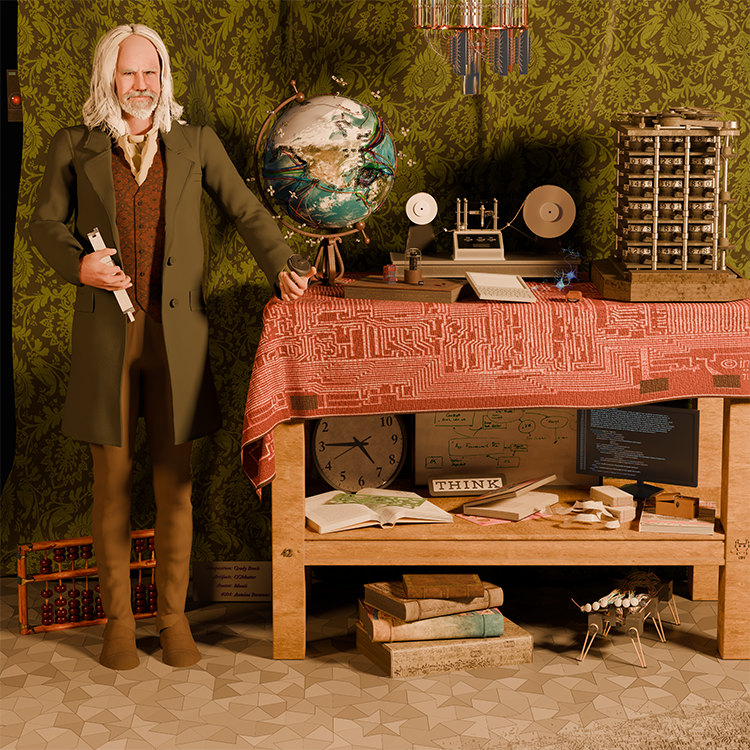
In the style of The Ambassadors, Hans Holbein the Younger's Renaissance masterpiece painted in 1533, The Computers portrays many of the artifacts that define the world of computing. Modeled in Blender, the concept and composition for The Computers is by Grady Booch, most of the artifacts are by CGMatter, the rigged avatar of Grady is by Monti, and the image of the 4004 semiconductor die is by Antonie Bercovici. As in Holbein's painting, The Computers is full of symbolism:

The staging, curtain, and table are modeled after The Ambassadors.

Appearing behind a fold in the curtain is HAL 9000, the sentient AI from 2001: A Space Odyssey.
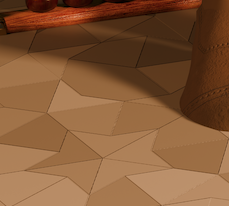
The pattern in the floor is a Penrose tiling..
The table has two sections representing the primary dichotomy of computing: the top shelf and above contain artifacts related to computing hardware while the lower shelf and below contain artifacts related to computing software.
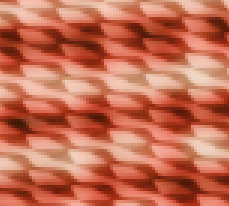
The table is covered with cloth woven in the style of an early Jacquard loom.
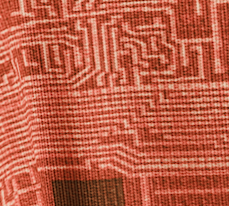
The pattern on the cloth is taken from the semiconductor die of the Intel 4004, the first commercial microprocessor.
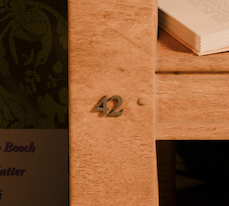
The left leg of the table is adorned with the number 42, which is the answer Deep Thought gives to the ultimate question of life, the universe, and everything.
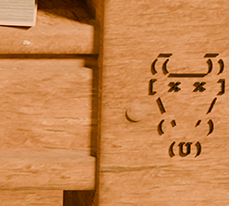
The right leg of the table is adorned with the logo of the Cult of the Dead Cow, one of the oldest hacker groups.
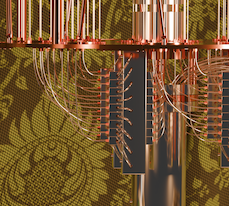
Above the table is the base of a quantum processor.

On the floor to the left of the table is an abacus.
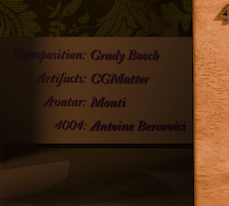
On the floor to the left and behind the table is a faceplate with the credits for The Computers, colored in Rebecca purple.

Below the table are several old books that helped establish the foundations of computing: the I Ching (1000 BCE), The Prosody of Pingala (600-200 BCE), Al-Jabr by Al-Khwarizmi (820 CE), and George Boole's An Investigation of the Laws Of Thought (1854).
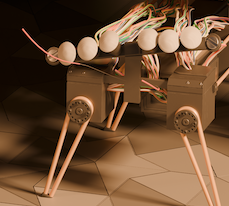
Also below the table is Rodney Brook's robot, Ghengis.
On the top shelf of the table are the following hardware artifacts:
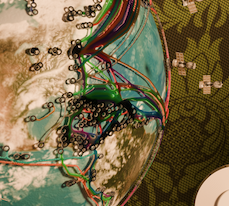
A globe showing major submarine internet cables and a constallation of GPS satellites.
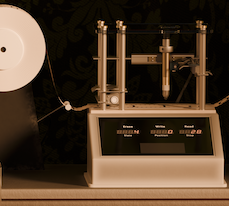
A realization of a Universal Turing Machine, built by Mike Davey.
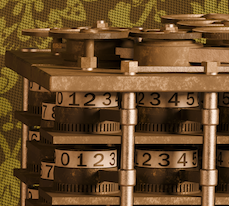
A component of Charles Babbage's Analytical Engine.
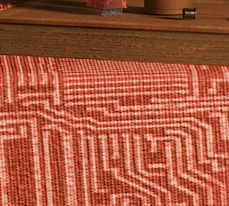
An old book with a fore-edge painting of Rene Descarte's phrase "I think therefore I am".
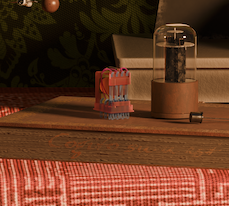
An electomagnetic relay.
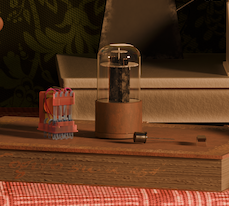
A vacuum tube.
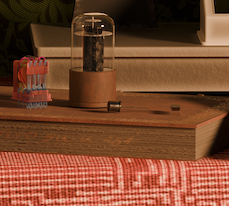
A transistor.
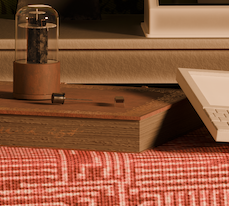
An integrated circuit.
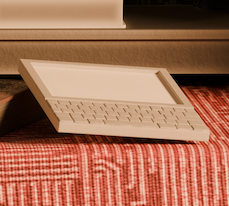
Alan Kay's Dynabook.
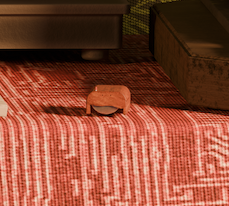
Douglas Englebart's mouse.
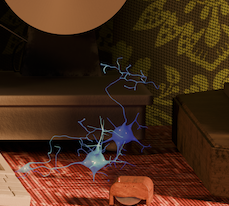
An organic neuron.
On the bottom shelf of the table are the following software artifacts:
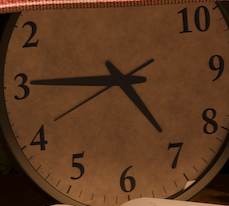
Grace Hopper's clock, set to 7:14 GMT, the time when Skynet went active.
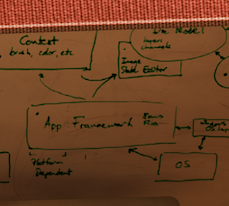
A whiteboard containing a sketch of the architecture of Adobe Photoshop.
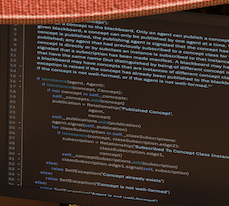
A monitor containing Python code from Self, a neural/symbolic architecture designed for NASA's mission to Mars.

IBM's THINK sign.

Representing the first golden age of software engineering, an open copy of Donald Knuth's The Art of Computer Programming with an IBM flowchart template on top.

Representing the second golden age of software engineering, a partially open book of Booch's Object-Oriented Design with a template for the Booch method below.
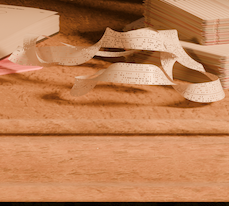
A spool of paper tape.<
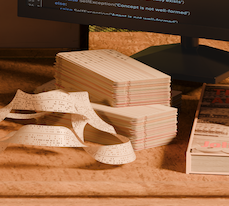
Several decks of punch cards.

John von Neumann's book, The Computer and the Brain.
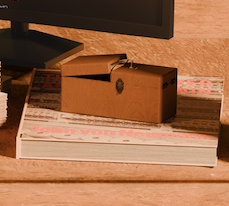
Claude Shannon's Useless Machine.
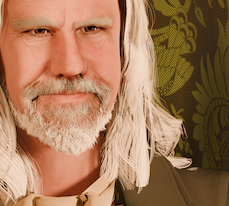
To the left of the table is an avatar dressed in clothing common to the age of Charles Babbage and Ada Augusta, Countess of Lovelace.

In the right hand is a slide rule.

In the left hand is a Curta mechanical calculator.
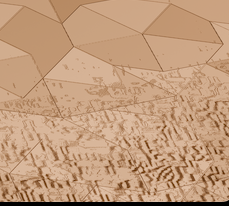
In the lower right of the floor is a momento morte, which can be interpreted in one of two ways: either the entire scene is one complex instance rising from a cosmos that at its foundation is wholly digital, or it is a fleeing moment in time and in space, destined to dissolve into its component bits.